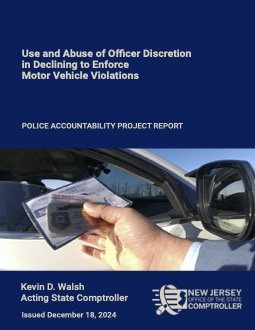By Dick M. Carpenter II, Kyle Sweetland and Jennifer McDonald
Code enforcement is supposed to be about protecting the public by discouraging— via monetary sanctions—dangerous driving and other hazardous personal conduct or property conditions. But in practice, local governments may also—or instead—use their code enforcement powers to raise revenue. This is taxation by citation. It is not a new phenomenon, but only in the past few years has it become an object of national concern. Despite the fresh spotlight, little is known about cities that engage in taxation by citation, beyond a few particularly egregious examples. To gain a better understanding of taxation by citation, this study explores the phenomenon through the lens of three Georgia cities—Morrow, Riverdale and Clarkston—that have historically relied on fines and fees from traffic and other ordinance violations for large proportions of their revenues. Consistent with case study research methods, we drew upon public data, a survey of and interviews with residents, photo and video records, and direct observation of the three cities and their municipal courts, which process the cities’ citations. Our results show: Over a five-year period, Morrow, Riverdale and Clarkston generated on average 14% to 25% of their revenues from fines and fees, while similarly sized Georgia cities took in just 3%. Such high levels of fines and fees revenue account for the second largest proportion of the cities’ revenues and may indicate taxation by citation. The three cities’ fines and fees revenues peaked in 2012 before beginning to decline as tax revenues increased. These trends generally correspond to the recession of the late 2000s and early 2010s and the subsequent recovery. This suggests the cities—which are poorer than average, face uncertain economic futures and have few means of generating substantial revenues—may have seen
fines and fees as a way out of a budget crunch. The sample cities issued many of their citations for traffic and other ordinance violations that presented little threat to public health and safety. Traffic violations posed only moderate risk on average, while property code violations were primarily about aesthetics. This suggests the cities are using their code enforcement powers for ends other than public protection.
To process citations, Morrow, Riverdale and Clarkston have their own courts, which are created and funded by the cities. These courts function as highly efficient revenue collectors. They process more cases than courts in similarly sized cities, and nearly everyone coming before them pleads or is found guilty. The three cities have few legal provisions preventing them from using their code enforcement powers for reasons other than public protection—or from violating citizens’ rights in the process. Cities may pay a price for taxation by citation. Morrow, Riverdale and Clarkston residents with recent citations reported lower levels of trust in government officials and institutions than residents without, suggesting cities that use code enforcement for revenue or other non-public safety reasons may undermine trust and cooperation in their communities. Taken together, these findings suggest taxation by citation is a function of the perceived need for revenue and the ability to realize it through code enforcement. Moreover, the phenomenon may be a matter of systemic incentives. City leaders need not set out to pick the pockets of residents. Instead, they may see fines and fees revenue as the answer to their cities’ problems and, absent obstacles such as independent courts or robust legal protections for people accused of ordinance violations, find themselves able to pursue it. And once in effect, the mechanisms necessary for taxation by citation—such as supremely efficient court procedures—may stick, becoming business as usual and ensuring fines and fees remain a reliable source of revenue. Our findings also suggest taxation by citation is shortsighted. Cities may gain revenue, but they may also pay a price for it in the form of lower community trust and cooperation. To avoid this outcome, cities should find other ways of shoring up their finances and use their code enforcement powers only to protect the public—and then only with meaningful safeguards for citizens’ rights in place.
Arlington, VA: Institute for Justice, 2019. 60p.





















